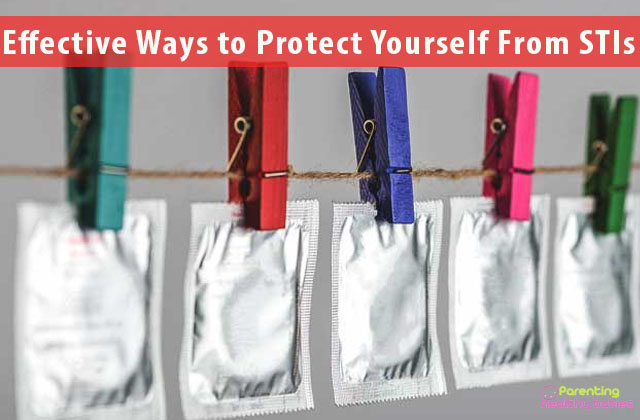The term sexually transmitted diseases (STIs) is used to identify by its mechanism of transmission, sexual contact, a group of infectious diseases caused by a heterogeneous group of microorganisms. These are infections that are spread by unprotected sexual contact (penis-vagina, anal or oral) with an infected person. They are caused by fungi, parasites, bacteria or viruses. They can also be contracted through skin contact with infected areas or ulcers of the sufferer.
Any sexually active person can suffer sexually transmitted infections. It affects men and women of any age and condition, but especially sexually active adolescents. Some behaviors increase the likelihood of contracting them, such as having several partners. Some infections can cause, in the long term, irreversible damage such as sterility, cancer in the sexual organs of men and women and, in some cases, even death.
The most frequent are syphilis, gonorrhea, chlamydia, genital herpes, hepatitis B and C, those caused by the AIDS virus (HIV) and the human papillomavirus.
Sexually Transmitted Diseases(STI): 11 Ways to Protect Yourself
Below are 11 effective ways to protect yourself from STIs:
The prevention of STIs includes preventing their onset, early recognition and effective treatment when they occur. This not only decreases the likelihood of complications for the patient but also prevents new infections in the community. The faster a patient with an STI is treated, the less likely it is to be transmitted to other people.
Knowledge is a must
You have to know about their existence and how to contract them to prevent them. It is important to share the information as a family, to make sure that the youngest members of the household are well informed. That will clarify doubts.
Hepatitis B
The most effective way to control and prevent infection is primarily immunization or vaccination, not forgetting the personal care and safety measures in the management of body fluids, blood and blood products.
All children and adolescents under 18 who have not been previously vaccinated should be vaccinated. Likewise, members of groups with greater risk should be vaccinated.
Investigate
Investigate for surface antigen (HBsAg) to the intimate or sexual contacts of carriers, and if they are negative, they should be vaccinated.
Newborns of infected mothers should receive HBB-specific globulin (HBIG) the first twelve hours after birth and the first dose of vaccine in the first week.
Use of condoms
The correct and consistent use of condoms. It should always be explained to adolescents that clearly and simply that the use of condoms, the most reliable method when people want to protect themselves or their partners from any risk of STIs and therefore when used correctly, constitute a barrier that prevents the entry of bacteria or viruses.
Screening
According to the USPSTF, there is no evidence-based recommendation about a specific age at which STI screening should begin, this behavior will be determined by age at first sexual intercourse, epidemiological data, and data on the prevalence of STIs. People will be at risk of contracting an STI if they are exposed to a causative agent, regardless of age, however, the treatment of asymptomatic infections (eg, infertility, ectopic pregnancy) will be different depending on the reproductive stage of the woman.
Syphilis risk
High-risk people and all pregnant women should be screened for syphilis (A). According to the USPSTF, the risk profile for syphilis includes the following populations: men who have sexual activity with other men, sex workers, people who exchange sex for drugs, people detained in prisons; people with this profile should be considered for the screening test; however, there is no evidence to define the frequency of it.
HIV testing
HIV testing should be discussed with all adolescents and according to the risk profile should be offered to those who are sexually active and those who use injectable drugs.
Adolescents
Adolescents 11 to 12 years of age should be routinely vaccinated with 3 doses of HPV4 or HPV2 administered intramuscularly at 0, 2 and 6 months. Vaccines can be administered as of 9 years of age at the discretion of the doctor.
All adolescents and women from 13 to 26 years of age who have not been previously vaccinated or have not completed the full series of vaccines, must complete it.
Use condom safely
The condom has two rings. The larger ring is used to cover the external genitalia and the smaller one to insert the condom and keep it in the correct place during intercourse.
Routine examination
It is recommended to perform the routine examination for C. trachomatis of all sexually active women aged 25 years, each year.
For the prevention of STIs and AIDS, barrier contraceptive methods are important and even more effective is abstinence. However, adolescents are more interested in these in order to avoid pregnancies and not as methods of STI prevention. It is widely recognized that HIV and other STIs are not prevented with unique and isolated programs but through a combination of prevention methods.
http://www.simcoemuskokahealth.org/Topics/SexualHealth/STIs/prevention/10waystoprotectyourself.aspx
https://www.myvmc.com/cosmetic/protecting-against-sexually-transmitted-infection













